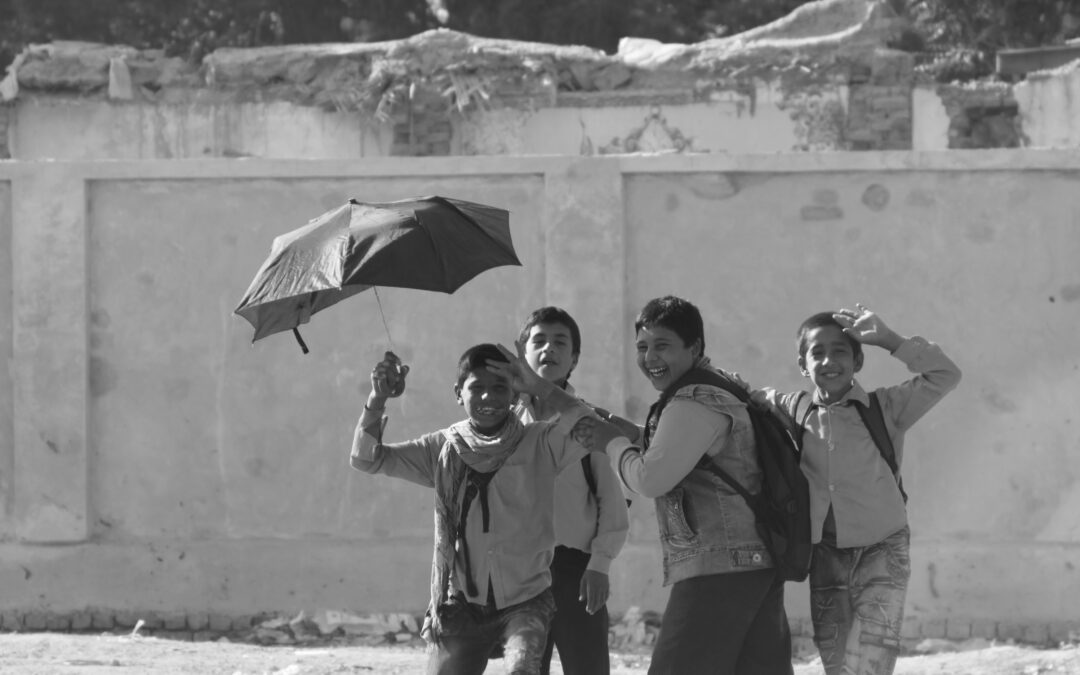These photos show northern Afghanistan, especially the area around Mazar-e-Sharif, from the years 2008–2010 when American and ISAF troops were in force and the war in Afghanistan was ongoing. Mazar is an ancient city, one which could be found centuries ago on the Silk Road, and one known for its artisanal rugs and splendid Blue Mosque. The city is located about an hour’s drive south of the border with Uzbekistan, a border that’s marked by the Amu Darya river. Between Mazar and the border lies a dry expanse, very desertlike, and one fraught with tectonic activity for there are still hot water geysers that sprout from the earth and make for fine bathing nooks. To the south of Mazar lie the Hindu Kush mountains. These mountains are home to the karakul sheep whose fur is made into famous hats such as those worn by former president Hamid Karzai. Shepherds tend these sheep on the steep, stony slopes. Surrounding Mazar are fields of grain, orchards with pomegranates and nuts, and, to the north, that desert.
I worked in this area from June of 2008 to December of 2010, and the photographs that I took show (though I say this myself) the beautiful side of a country in conflict. I met many friendly people while I was in Mazar and found that the Afghans have a wonderful sense of generosity. A great many of my Afghan colleagues also had a wild and ribald sense of humor that left me with my eyebrows raised and a grin on my face. The project that I worked on was a higher education project that was sponsored by The World Bank. Through a joint effort between Balkh University, Kabul University, and Kansas State University, professors at the Afghan universities were sent to the United States or to Turkey to earn their Master’s degrees, since at that time there were no accredited Master’s programs in Afghanistan in their fields. At the same time, Kabul and Balkh University students were sent for cultural exchanges: single semester terms at Kansas State University. My job was originally as a consultant-lecturer, and then later as the In-Country Administrative Director. I served in these dual capacities until the scheduled completion of this Strengthening Higher Education Project.
The photographs were taken in my spare time. With my taxi driver, Zaki, and his friends, we traveled the countryside at my expense. I lived “outside the wire” as it is sometimes called, so I had the luck and freedom to explore and discover, and I was happy to indulge myself. In Zaki’s jouncing taxi cab, we visited former a Soviet wool factory and spoke with its Afghan director and workers. We picnicked in the mountains and talked with the shepherds. We watched buzkashi matches—buzkashi being a rather rough game played in winter on horseback and using the carcass of a goat. We visited sellers and crafters of Persian rugs, my neighbors who ground sunflower oil with a huge mortar and pestle that was worked by a camel, and the old Buddhist ruins that lie near the ancient city of Balkh. We saw abandoned Soviet tanks, farmers who plowed with oxen, volleyball courts set up in bullet-riddled buildings, and graveyards in which children played. And of course Zaki, his friends, and I drank a lot of tea. My friendship with Zaki became a good one. I attended his wedding. I was present at his home with him, his father, and another friend named Hezatullah, shortly after the birth of Zaki’s firstborn child. Zaki and I took trips halfway across the country together, met bandits disguised as police, and police who might as well have been bandits. During my time in Afghanistan, I took some ten thousand photographs.
Since those days, much has changed. The Afghan government fell, and a great many of my Afghan friends have left the country, settling in places around the world. Those Afghans who remain often write and tell me deplorable stories of the new administration. Many of them are desirous of leaving their home and country. Still, I have no doubt that the munificent, warm, and neighborly spirit of the Afghan people remains. And I can only hope that a small part of their magnificent nature shines through in these few photographs.
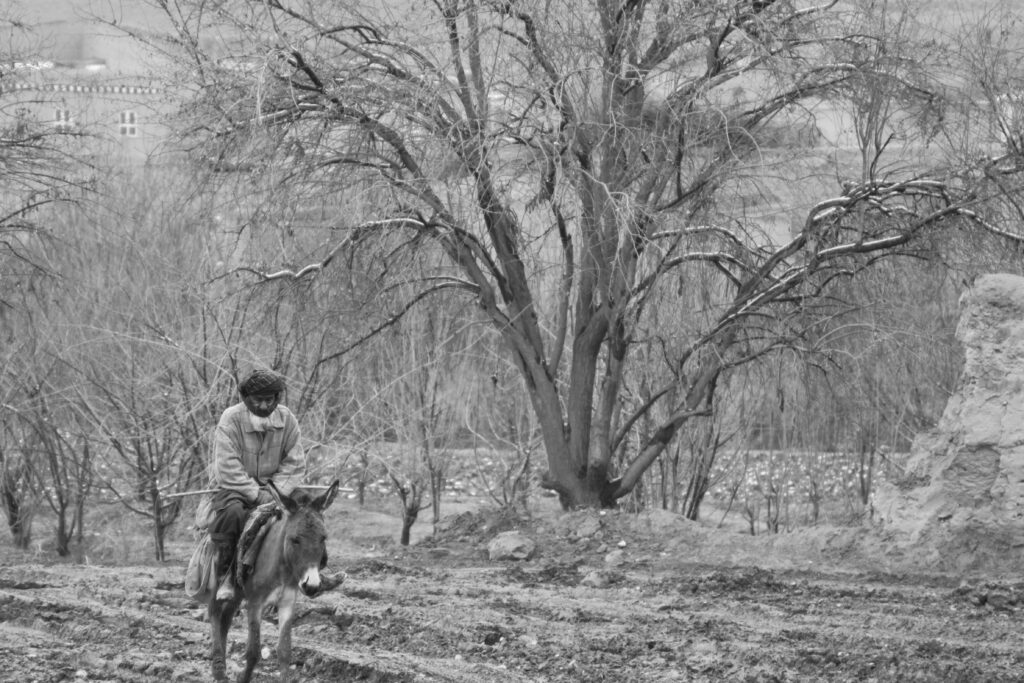
Man on Donkey in Winter
Foothills of the Hindu Kush Mountains, South of Mazar; 28 January 2010
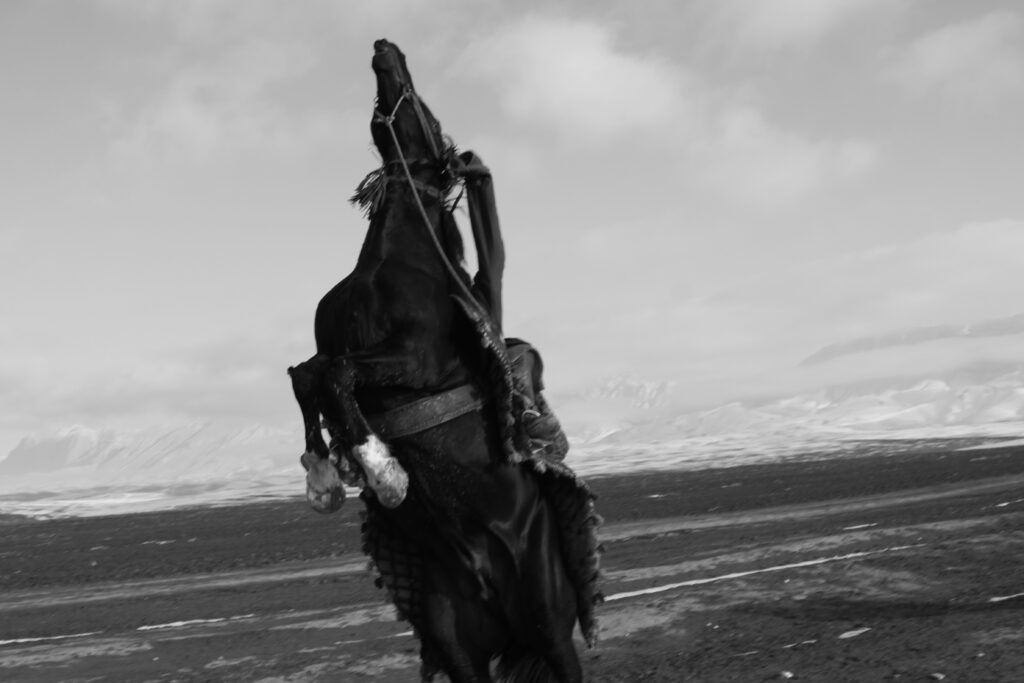
Buzkashi Rider
Mazar-e-Sharif; 9 February 2010
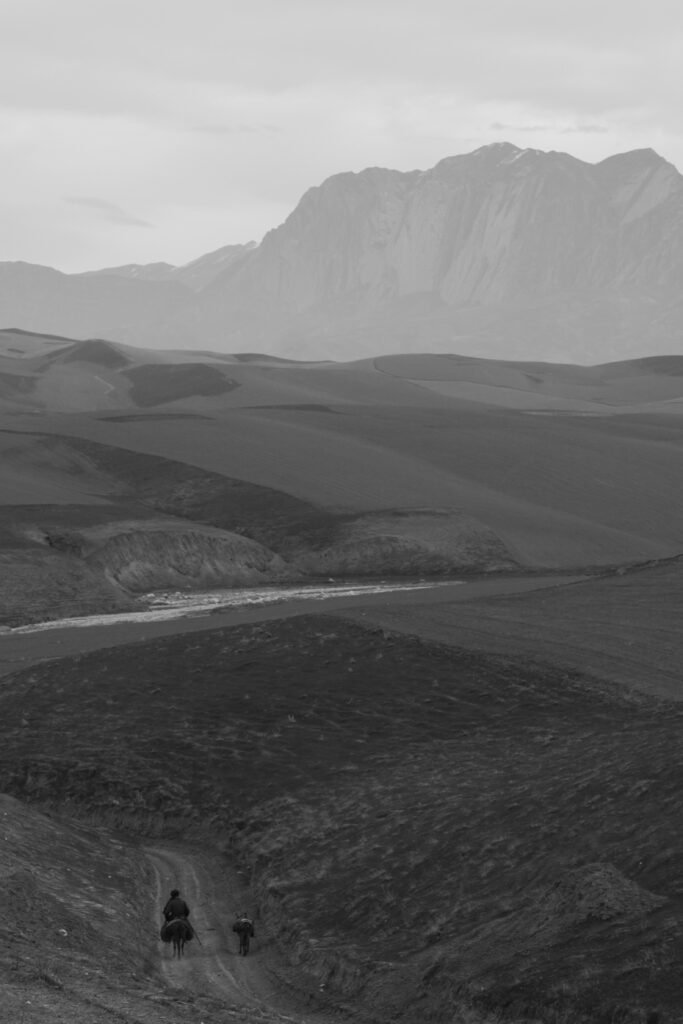
Through the Pass
Foothills of the Hindu Kush Mountains, South of Mazar 5 February 2010
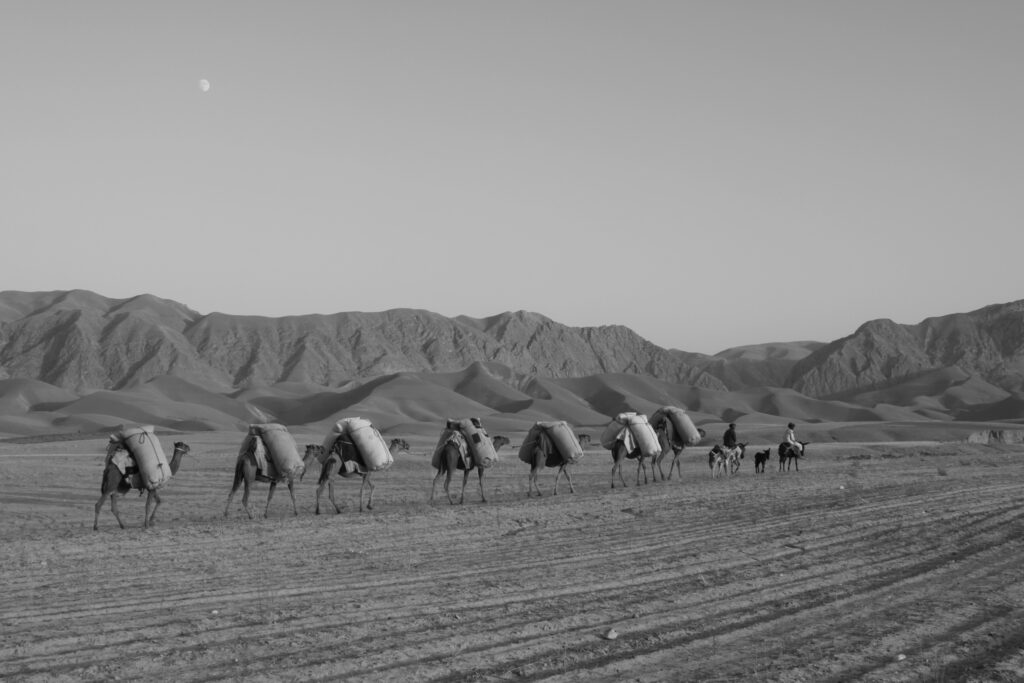
Camel Train with the Moon over the Mountains
Foothills of the Hindu Kush Mountains, South of Mazar; 30 August, 2009
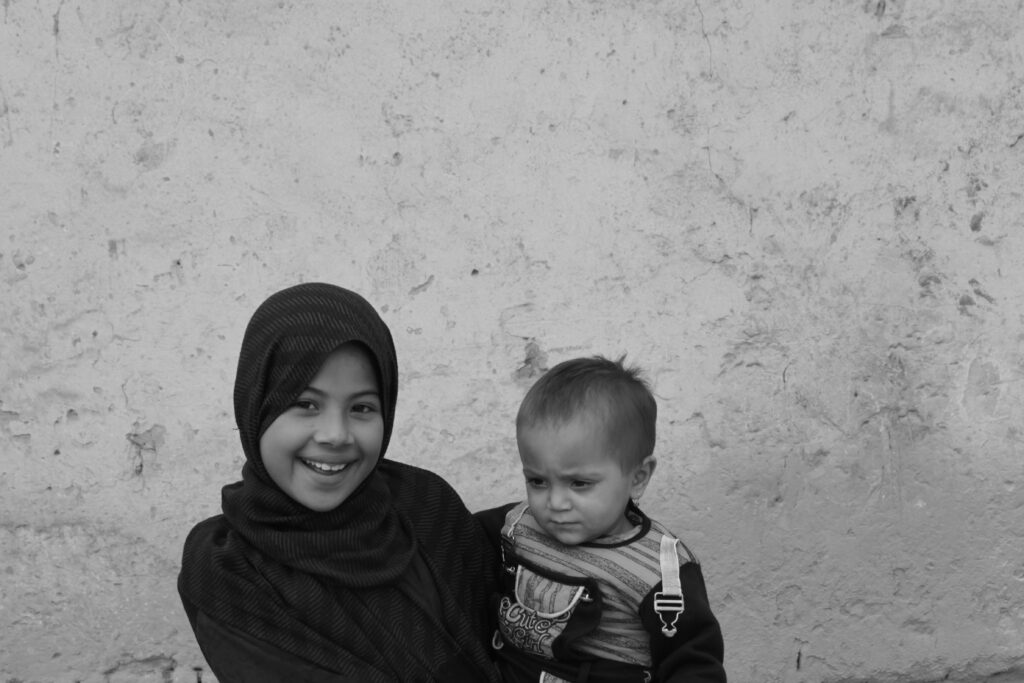
My Neighbor and Her Sibling
Mazar-e-Sharif; January 26, 2010
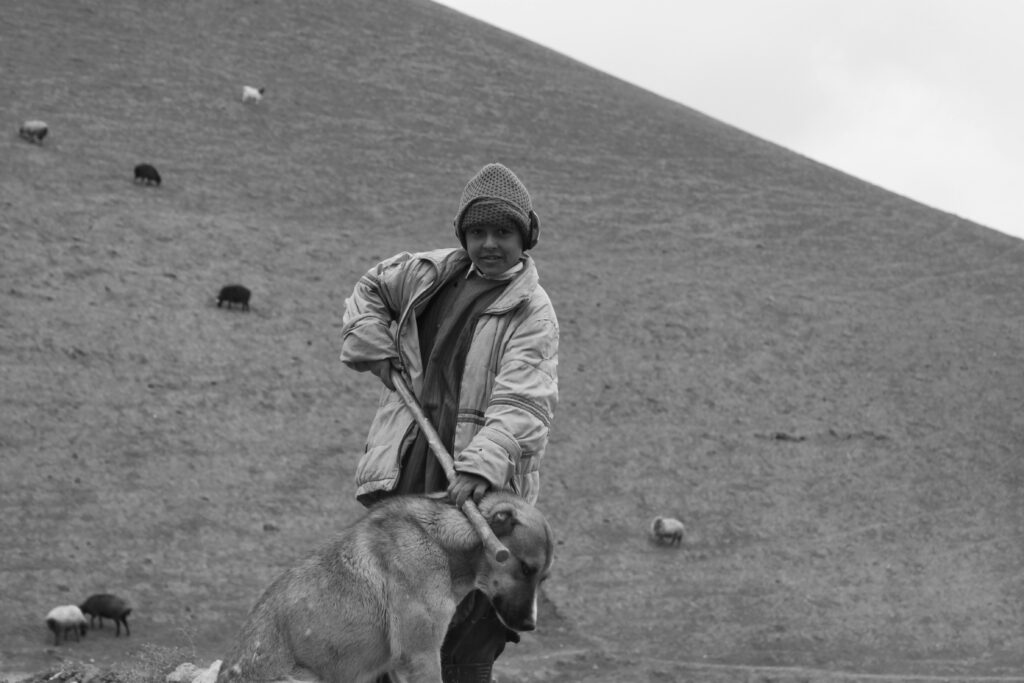
A Young Shepherd and His Flock and Dog
Foothills of the Hindu Kush Mountains, South of Mazar; 28 January 2010
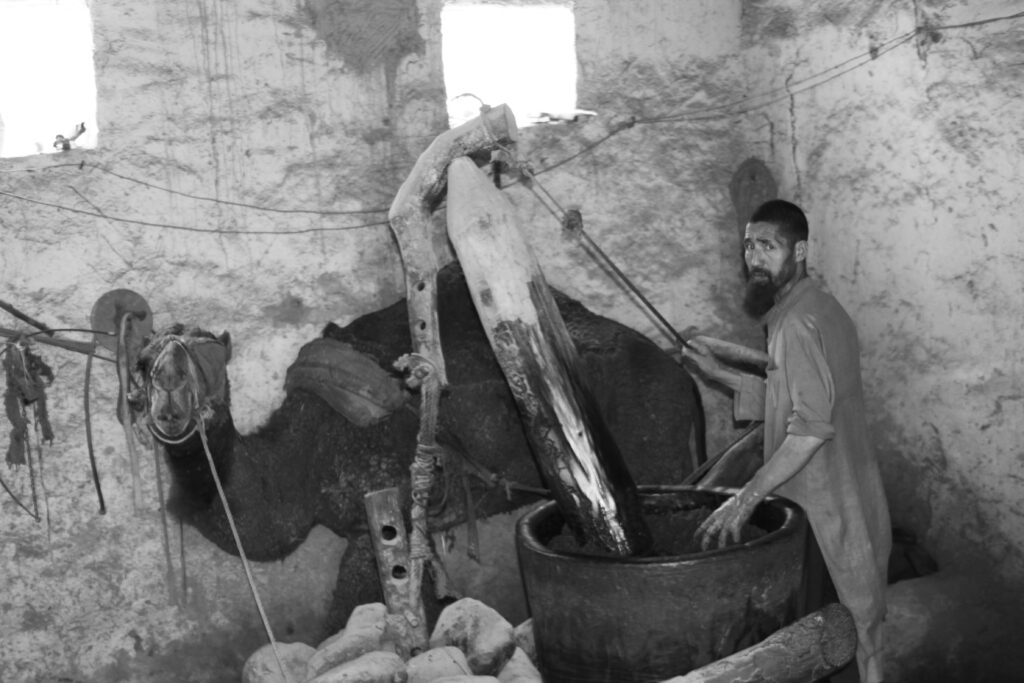
My Neighbor Grinding Sunflower Oil with a Camel
Mazar-e-Sharif, 29 May 2010
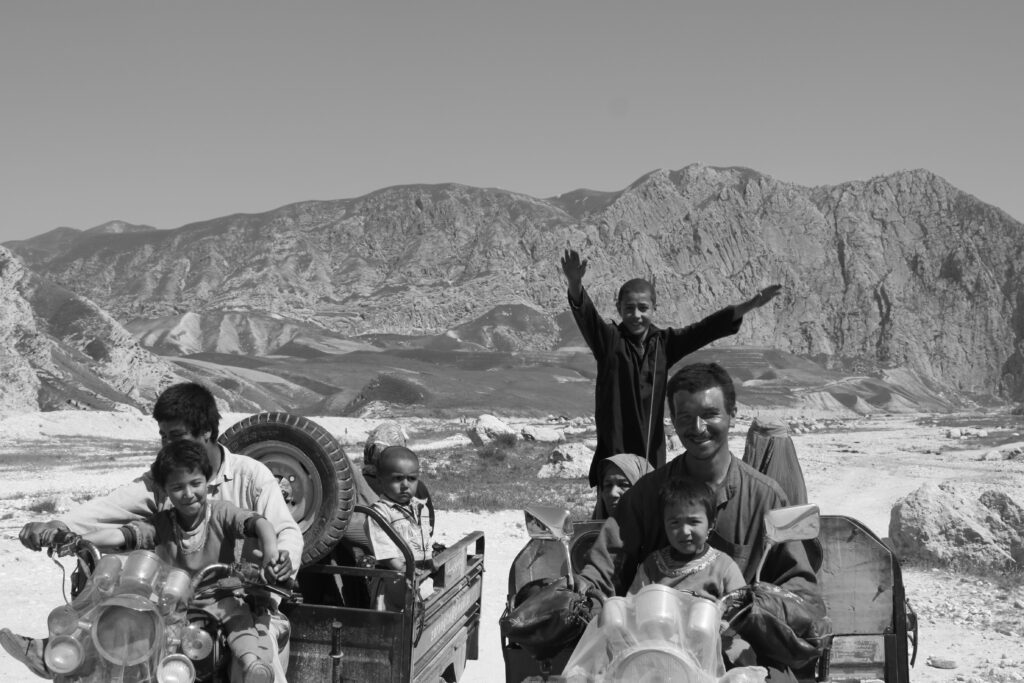 Families Coming In from the Hindu Kush
Families Coming In from the Hindu Kush
Foothills of the Hindu Kush Mountains, South of Mazar; 23 April 2010
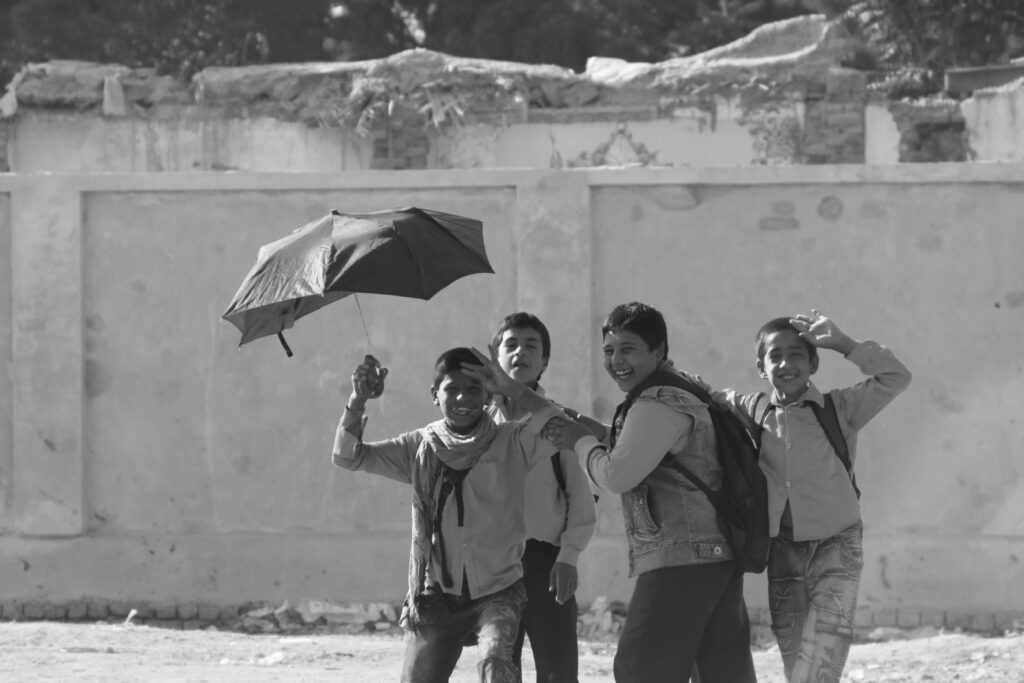
Boys with Umbrella
Mazar-e-Sharif; 1 June 2010
David Murphy
David was born in Ponca City, Oklahoma on Easter Sunday. He earned his English M.A. from Kansas State University where he won the Seaton Fellowship in Creative Writing. In 2022, he published poetry in Orchards Poetry Journal, Elsewhere: A Journal of Place, and Dream Noir. In 2023, he published photographs in CutBank and interviewed with Kelp Journal.
